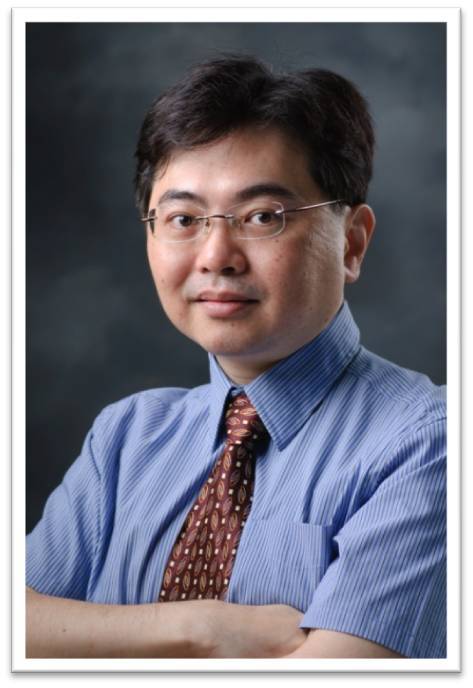|
Publications:
- Hsiao SH, Lusvarghi S, Huang YH, Ambudkar SV, Hsu SC*, Wu CP*. The FLT3 inhibitor midostaurin selectively resensitizes ABCB1-overexpressing multidrug-resistant cancer cells to conventional chemotherapeutic agents. Cancer Lett. 2019;445:34-44.
- Huang JP ‡, Hsu SC ‡, Li DE, Chen KH, Kuo CY, Hung LM. Resveratrol mitigates high-fat diet-induced vascular dysfunction by activating the Akt/eNOS/NO and Sirt1/ER pathway. J Cardiovasc Phamacol. 2018;72(5):231-41.
- Lin PY, Hsu SC, Chen HC, Len WB, Hsiao FC, Liu MC, Pan PL, Lin TC, Lee YH, Meir YJ. Optimization of reprogramming culture condition for the generation of induced pluripotent stem cells from Col1a1 4F2A-Oct4-GFP mice with high efficiency. FEBS J. 2018;285(9):1667-83
- Huang JP, Hsu SC, Meir YJ, Hsieh PS, ChangCC, Chen KH, Chen JK, Hung LM. Role of dysfunctional adipocytes in cholesterol-induced nonobese metabolic syndrome. J. Mol. Endocrinol.2018;60(4):307-21
- Wu CP, Hsieh CH, Hsiao SH, Luo SY, Su CY, Li YQ, Huang YH, Huang CW, Hsu SC. Human ATP-binding cassette transporter ABCB1 confers resistance to Volasertib (BI 6727), a selective inhibitor of polo-like kinase 1. Mol Pharm. 2015;12(11):3885-95.
- Liao AH, Chou HY, Hsieh YL, Hsu SC, Wei KC, Liu HL. Enhanced therapeutic epidermal growth factor receptor (EGFR) antibody delivery via pulsed ultrasound with targeting microbubbles for glioma treatment. J Med Biol Eng. 2015;35(2):156-64.
- Liang SL, Hsu SC, Pan JT. Involvement of dopamine D2 receptor in the diurnal changes of tuberoinfundibular dopaminergic neuron activity and prolactin secretion in female rats. J Biomed Sci. 2014;21:37.
- Yang HW, Lu YJ, Lin KJ, Hsu SC, Huang CY, She SH, Liu HL, Lin CW, Xiao MC, Wey SP, Chen PY, Yen TC, Wei KC, Ma CC. EGRF conjugated PEGylated nanographene oxide for targeted chemotherapy and photothermal therapy. Biomaterials 2013;34(29):7204-14.
- Wu CP, Sim HM, Huang YH, Liu YC, Hsiao SH, Cheng HW, Li YQ, Ambudkar SV, Hsu SC. Overexpression of ATP-binding cassette transporter ABCG2 as a potential mechanism of acquired resistance to vemurafenib in BRAF(V600E) mutant cancer cells. Biochem Pharmacol. 2013;85:325-34.
- Huang CR, Wang RY, Hsu SC, Lo SJ. Lysine-71 in the large delta antigen of hepatitis delta virus clade 3 modulates its localization and secretion. Virus Res. 2012;170:75-84.
- Song H, Li CW, Labaff AM, Lim SO, Li LY, Kan SF, Chen Y, Zhang K, Lang J, Xie X, Wang Y, Huo LF, Hsu SC, Chen X, Zhao Y, Hung MC. Acetylation of EGF receptor contributes to tumor cell resistance to histone deacetylase inhibitors. Biochem. Biophys. Res. Commun. 2011;404(1):68-73.
- Huo L, Wang YN, Xia W, Hsu SC, Lai CC, Li LY, Chang WC, Wang Y, Hsu MC, Yu YL, Huang TH, Ding Q, Chen CH, Tsai CH, Hung MC. RNA helicase A is a DNA-binding partner for EGFR-mediated transcriptional activation in the nucleus. Proc. Natl. Acad. Sci. 2010;107(37):16125-30.
- Hsu SC, Miller SA, Wang Y, Hung MC. Nuclear EGFR is required for cisplatin resistance and DNA repair. Am. J. Transl. Res. 2009;1(3):249-58.
- Lo WH, Hsu SC, Xia W, Cao X, Shih JY, Abbruzzese JL, Hortobagyi GN, Hung MC. Epidermal growth factor receptor cooperates with signal transducer and activator 3 to induce epithelial-mesenchymal transition in cancer cells via up-regulation of TWIST gene expression. Cancer Res. 2007;67(19): 9066-76.
- Hsu SC and Hung MC. Characterization of a novel tripartite nuclear localization sequence in the EGFR family. J Biol. Chem. 2007;282(14):10432-40.
- Lo HW, Ali-Seyed M, Wu Y, Bartholomeusz G, Hsu SC, Hung MC. Nuclear-cytoplasmic transport of EGFR involves receptor endocytosis, importin beta1 and CRM1. J. Cell. Biochem. 2006;15. 98(6):1570-83.
- Lo HW, Hsu SC, Hung MC. EGFR signaling pathway in breast cancers: from traditional signal transduction to direct nuclear translocalization. Breast Cancer Res. Treat. 2006;95(3):211-8. (Review)
- Chuang CH, Chiu HJ, Hsu SC, Ho JY, Syu WJ. Comparison of Tir from enterohemorrahgic and enteropathogenic Escherichia coli strains: two homologues with distinct intracellular properties. J. Biomed. Sci. 2006;1:73-87.
- Lo HW, Hsu SC, Ali-Seyed M., Gunduz M, Xia W, Wei Y, Bartholomeusz G., Shih JY, Hung MC. Nuclear interaction of EGFR and STAT3 in the activation of iNOS/NO pathway. Cancer Cell 2005;7(6):575-89.
- Wu JC, Hsu SC, Wang SY, Huang YH, Sheen IJ, Shih HH, Syu WJ. "Defective" mutations of hepatitis D viruses in chronic hepatitis D patients. World J Gastroenterol. 2005;11(11):1658-62.
- Hsu SC, Wu JC, Sheen IJ, Syu WJ. Interaction and replication activation of genotype I and II hepatitis delta antigens. J. Virol. 2004;78(6):2693-700.
- Huang YH, Wu JC, Hsu SC, Syu WJ. Varied immunity generated in mice by DNA vaccines with large and small hepatitis delta antigens. J. Virol. 2003;77(24):12980-85.
- Hsu SC, Syu WJ, Sheen IJ, Liu HT, Jeng KS, Wu JC. Varied assembly and RNA editing efficiencies between genotypes I and II hepatitis D virus and their implications. Hepatology 2002;35:665-72.
- Chuang CH, Hsu SC, Hsu CL, Hsu TC, Syu WJ. Construction of a tagging system for subcellular localization of proteins encoded by open reading frames. J. Biomed. Sci. 2001;8:170-75.
- Hsu SC, Syu WJ, Ting LT, Wu JC. Immunohistochemical differentiation of hepatitis D virus genotypes. Hepatology 2000;32:1111-16.
- Huang YH, Wu JC, Tao MH, Syu WJ, Hsu SC, Chi WK, Chang FY, Lee SD. DNA-based immunization produces Th1 immune responses to hepatitis delta virus in a mouse model. Hepatology 2000;32:104-10.
- Hsu SC, Lin HP, Wu JC, Ko KL, Sheen IJ, Yan BS, Chou CK, Syu WJ. Characterization of a strain-specific monoclonal antibody to hepatitis delta virus antigen. J. Virol. Methods 2000;87(1-2):53-62.
- Lin HP, Hsu SC, Wu JC, Sheen IJ, Yan BS, Syu WJ. Localization of isoprenylated antigen of hepatitis delta virus by anti-farnesyl antibodies. J. Gen. Virol. 1999;80:91-6.
- Hsu SC, Yan BS, Pan JM, Syu WJ. A monoclonal antibody reacts with maltose-binding protein of Escherichia coli and related enteric bacteria. J. Immunol. Methods 1997;204:169-74.
|

